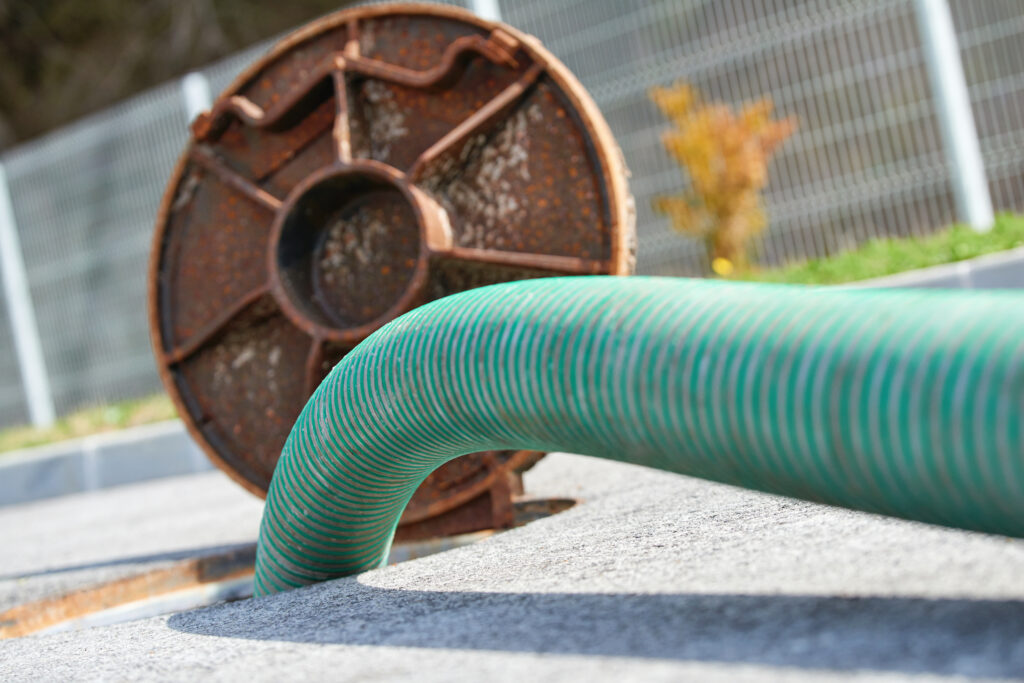
Clogs in toilets and sinks that require plunging come to mind when most people think of a clog. While these blockages are annoying, they are not nearly as bad as when the main sewage line is completely clogged or collapses. The main sewage line, which is located outside the house, receives all of the drainage pipes. It can take thousands of dollars to repair this line if it becomes clogged or collapses, and you won’t have any drainage until it is. It’s fortunate that a collapsed sewer line’s indicators are so easily discernible. There is a better chance of saving money if you detect the changes sooner rather than later. Here are five things to look out for if you suspect your sewer line is plugged or has collapsed.
Frequent Backups
When the toilet overflows, you’re left with a soggy bathroom. Disgusting, and you’ll call a plumber more often than if the sink or bathtub overflow. Your main sewer line is clogged or collapsing if you see regular back-ups, especially in the lower levels of your home. There is a good chance that you’ll first detect the problem in your basement plumbing because it’s closer to the main sewer line. As a result, all of the drains’ water flows into the main sewer. Water can’t flow if the pipe is broken or obstructed. Afterward, it reverses course and takes the shortest route possible. That’s most likely the lowest point in the basement where a drain can be found. Water recedes from a ruptured pipe if the dirt around it can be accessed and the water is slowly absorbed by the dirt Because of the pipe’s continued deterioration, it frequently backs up. You may not notice it at first, but if it isn’t taken care of, it will get worse and worse over time.
Multiple Fixture Clogs
When the main sewer system fails, it affects every drain because it is connected to it. Multiple fixtures may become clogged or cause backups if the water has nowhere to go. It might be air or water rushing into your toilet if you take a bath and the water doesn’t drain quickly. Then your toilet starts bubbling. As a result, your bathtub, bathroom sink, and other drains may not drain properly at the same time. Attempting to flush the toilet may not be an option if the collapse is severe. Instead, the water drains slowly or not at all from the ruptured pipe. These are evident signs of clogs or collapses, and plumbers use a camera to inspect the pipe and locate the problem area. The cost of resolving the issue is heavily influenced by the problem’s location. The collapse or blockage can be caused by a variety of factors, including corrosion, grease, and other debris in the pipe. It is possible for tree roots to penetrate the pipe and cause it to collapse. It might be a huge operation to replace or repair the pipe because it is buried beneath.
Plumbing has a mind of its own
Drains might be adversely affected in unexpected ways if your main sewer pipe becomes clogged or collapses. There are numerous connections, curves, and turns in the drainage pipes in your property. Drains can make unusual noises, release foul odors, or bubble up when your sewage line becomes clogged. When you hear the sound of air coming back up out of your toilet, you might fear it’s haunted. Try running the bathroom faucet for a few seconds to see if it stops the toilet from bubbling. The toilet or bathtub drain may also make a gurgling sound, which is a strong indication that something is amiss. In addition, the drains may emit an unpleasant smell. As a result, the scent can return through the other drains since waste and sewage aren’t draining properly from the toilet. You’ll be able to tell anything is amiss even if it isn’t a full sewage backup. You and your family’s health could be in jeopardy if sewage backs up into other drains. Bacteria and other pollutants found in wastewater can cause disease. It can transmit a wide range of illnesses, from the common cold to more serious health issues.
Is your lawn soaked?
You may notice changes in your yard because the main sewage line is located outside. The dirt and water from the outside can now enter a pipe that has corroded or been broken by a tree root. Dishwater drains into the main sewer system when it is flushed or drained. When the water comes into contact with the collapsed area, it is absorbed by the surrounding ground. You’ll see the lawn above the collapse saturated in water or even have standing puddles over time as the ground saturates. When a pipe collapses, you may have standing water on your yard, and the plumber will have to dig down to the broken pipe to fix it.
Is your grass growing faster than normal?
If you have a wet spot on your lawn, you may notice that the grass there grows more quickly than in other spots. As water rises to the surface, you’ll see an increase in growth over the collapsed sewer line, which may begin slowly at first. You’ll keep mowing the grass, but it will keep growing. Oversaturation of the grass can lead to its death if water pools there. This can take a long time to happen, so if the grass dies or if the fast-growing grass spreads to a larger area, it will be a massive undertaking to repair the collapsed pipe.
The cost of repairing a collapsed sewer line, as well as the annoyance it causes, makes early detection of the problem essential. Detecting early indicators of a collapsed sewer pipe could save you money. Contact Rooter John in Anaheim, CA for your plumbing needs.
